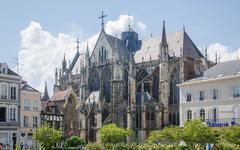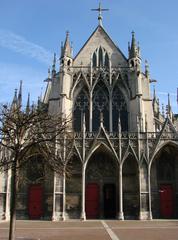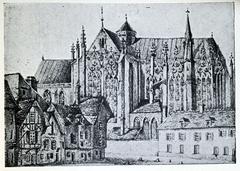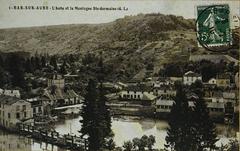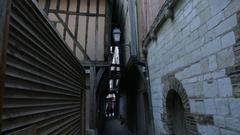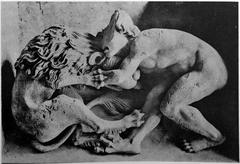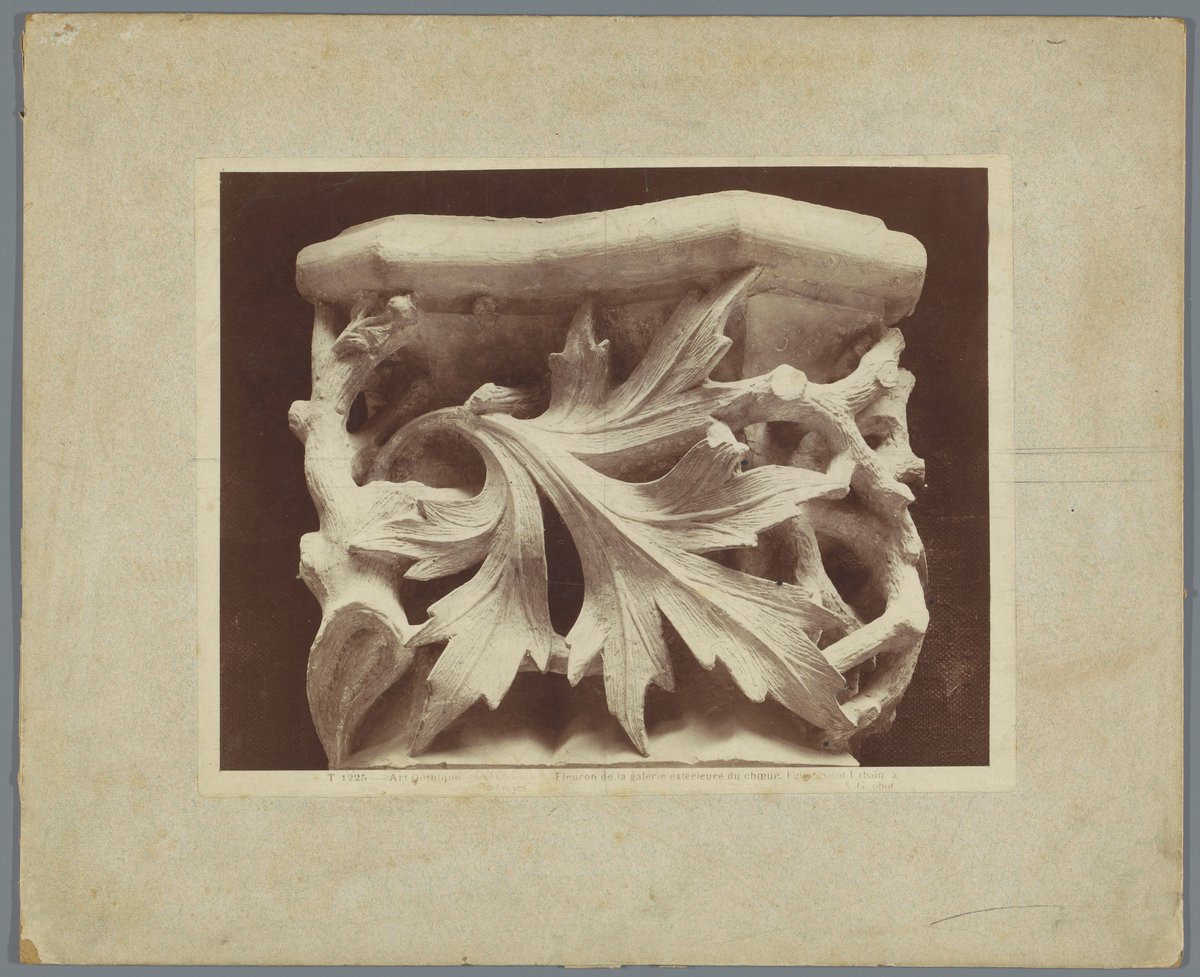
Visiting Hours, Tickets, and Historical Sites of Basilique Saint-Urbain, Troyes
Date: 19/07/2024
Introduction
The Basilique Saint-Urbain in Troyes, France stands as a paragon of Gothic architecture, embodying centuries of religious, cultural, and historical significance. Founded by Pope Urban IV in the 13th century, this basilica is not only a spiritual haven but also an architectural masterpiece renowned for its intricate design elements and breathtaking stained glass windows. Visitors to Basilique Saint-Urbain are often captivated by its soaring vaulted ceilings, flying buttresses, and the striking rose window that adorns its west facade. Despite facing numerous interruptions and delays over the centuries, the basilica has been meticulously preserved and restored, making it a must-visit destination for history enthusiasts, architecture admirers, and spiritual seekers alike.
This comprehensive guide aims to provide potential visitors with all the essential information they need to plan their visit, from historical insights and architectural features to practical details such as visiting hours, ticket prices, and travel tips. Whether you are planning a pilgrimage, a historical exploration, or simply a peaceful retreat, this guide will help you make the most of your visit to Basilique Saint-Urbain. For more detailed information, please refer to the official website.
Table of Contents
- [Introduction](#introductionintroduction)
- [History of Basilique Saint-Urbain](#history-of-basilique-saint-urbainhistory-of-basilique-saint-urbain)
- [Origins and Construction](#origins-and-constructionorigins-and-construction)
- [Interruptions and Delays](#interruptions-and-delaysinterruptions-and-delays)
- [Architectural Significance](#architectural-significancearchitectural-significance)
- [Historical Events and Restoration](#historical-events-and-restorationhistorical-events-and-restoration)
- [Visitor Information](#visitor-informationvisitor-information)
- [Visiting Hours](#visiting-hoursvisiting-hours)
- [Ticket Prices](#ticket-pricesticket-prices)
- [Travel Tips](#travel-tipstravel-tips)
- [Nearby Attractions](#nearby-attractionsnearby-attractions)
- [Accessibility](#accessibilityaccessibility)
- [Special Features](#special-featuresspecial-features)
- [Guided Tours](#guided-toursguided-tours)
- [Photographic Spots](#photographic-spotsphotographic-spots)
- [FAQ Section](#faq-sectionfaq-section)
- [Conclusion](#conclusionconclusion)
- [Call to Action](#call-to-actioncall-to-action)
- [References](#referencesreferences)
History of Basilique Saint-Urbain
Origins and Construction
The Basilique Saint-Urbain in Troyes, France, is a masterpiece of Gothic architecture, whose origins date back to the 13th century. The basilica was founded by Pope Urban IV, born Jacques Pantaléon in Troyes. Upon his election as pope in 1261, Urban IV decided to honor his hometown by commissioning a grand church dedicated to Saint Urban, his patron saint. Construction began in 1262, shortly after Urban IV’s papacy commenced.
The initial phase of construction was overseen by the architect Jean Langlois. The basilica’s design was heavily influenced by the Gothic style, characterized by its pointed arches, ribbed vaults, and flying buttresses. These architectural elements were intended to create a sense of verticality and lightness, drawing the eyes upward towards the heavens. The use of large stained glass windows further enhanced this effect, filling the interior with colorful light.
Interruptions and Delays
The construction of Basilique Saint-Urbain faced numerous interruptions and delays. One of the primary reasons for these interruptions was the death of Pope Urban IV in 1264, just two years after construction began. Without his direct patronage, the project lost momentum and funding. Additionally, the political and economic instability in France during the late 13th and early 14th centuries further hindered progress.
Despite these challenges, construction continued sporadically over the next few centuries. The nave and transept were completed in the 14th century, while the choir and apse were finished in the 15th century. The basilica’s west facade, with its intricate rose window and twin towers, was not completed until the 19th century, under the direction of architect Eugène Viollet-le-Duc, a prominent figure in the Gothic Revival movement.
Architectural Significance
Basilique Saint-Urbain is renowned for its architectural significance, particularly its innovative use of Gothic elements. The basilica’s facade is a prime example of Rayonnant Gothic architecture, characterized by its emphasis on vertical lines and intricate tracery. The rose window, a hallmark of Gothic design, is one of the largest and most elaborate in France, measuring over 10 meters in diameter.
The interior of the basilica is equally impressive, with its soaring vaulted ceilings and slender columns. The use of flying buttresses allowed for the inclusion of large stained glass windows, which depict scenes from the Bible and the lives of saints. These windows are considered some of the finest examples of medieval stained glass in France, showcasing the skill and artistry of the craftsmen who created them.
Historical Events and Restoration
Throughout its history, Basilique Saint-Urbain has witnessed numerous historical events and undergone several restorations. During the French Revolution, the basilica was seized by the state and used as a warehouse, resulting in significant damage to its interior and exterior. Many of the original stained glass windows were destroyed or removed, and the building fell into disrepair.
In the 19th century, efforts were made to restore the basilica to its former glory. Architect Eugène Viollet-le-Duc, known for his work on Notre-Dame de Paris and other Gothic landmarks, was commissioned to oversee the restoration. Viollet-le-Duc’s work included the reconstruction of the west facade, the restoration of the stained glass windows, and the reinforcement of the building’s structural elements.
More recently, in the 20th and 21st centuries, additional restoration projects have been undertaken to preserve the basilica’s architectural and historical integrity. These efforts have included the cleaning and repair of the exterior stonework, the restoration of the interior decorations, and the installation of modern lighting and climate control systems to protect the delicate stained glass windows.
Visitor Information
Visiting Hours
Basilique Saint-Urbain is open to visitors throughout the year. The typical visiting hours are:
- Monday to Saturday: 9:00 AM to 6:00 PM
- Sunday: 1:00 PM to 6:00 PM
Please check the official website for any changes to the schedule, especially during holidays and special events.
Ticket Prices
Admission to Basilique Saint-Urbain is free of charge. However, donations are welcome to support the ongoing maintenance and restoration efforts.
Travel Tips
- Best Times to Visit: The basilica is less crowded during weekday mornings. Spring and early autumn are ideal times to visit due to mild weather.
- How to Get There: The basilica is located in the heart of Troyes and is accessible by foot from most central locations. Public transportation options include buses and taxis.
Nearby Attractions
- Troyes Cathedral: Another stunning example of Gothic architecture, located just a short walk from the basilica.
- Museum of Modern Art: Offers a diverse collection of modern artworks and is situated nearby.
- Ruelle des Chats: A charming medieval alley that provides a glimpse into Troyes’ historical past.
Accessibility
Basilique Saint-Urbain is committed to being accessible to all visitors. The main entrance is wheelchair accessible, and assistance is available upon request. Please contact the basilica in advance for any specific accessibility needs.
Special Features
Guided Tours
Guided tours are available for those who wish to learn more about the basilica’s history and architectural details. Tours can be booked in advance through the official website or at the basilica’s visitor center.
Photographic Spots
The basilica offers numerous photographic opportunities, including its stunning west facade, intricate rose window, and beautifully illuminated interior. For the best lighting, consider visiting during the late morning or early afternoon.
FAQ Section
What are the visiting hours for Basilique Saint-Urbain?
The basilica is open from Monday to Saturday, 9:00 AM to 6:00 PM, and on Sunday from 1:00 PM to 6:00 PM.
How much do tickets to Basilique Saint-Urbain cost?
Admission is free, but donations are welcome.
Are guided tours available at Basilique Saint-Urbain?
Yes, guided tours are available and can be booked through the official website or at the visitor center.
Is Basilique Saint-Urbain wheelchair accessible?
Yes, the main entrance is wheelchair accessible, and assistance is available upon request.
Conclusion
Basilique Saint-Urbain is not only a place of worship but also a significant cultural and historical landmark in Troyes. Whether you are interested in its architectural beauty, historical significance, or spiritual importance, a visit to this basilica offers a profound and enriching experience. For more information, visit the official website.
Call to Action
For more updates and information on other historical sites in Troyes, follow us on social media and check out our mobile app Audiala.

